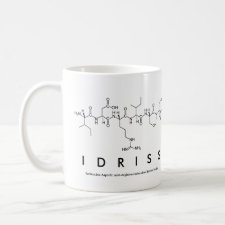
Authors: Ben Oujji N, Bakas I, Istamboulie G, Ait-Ichou I, Ait-Addi E, Rouillon R, Nouger T
Article Title: Enzymatic biosensor associated with Molecularly Imprinted Polymers for sensitive and selective detection of organophosphorus insecticides in olive oil.
Publication date: 2014
Journal: Science Innovation
Volume: 2
Issue: (6-1)
Page numbers: 1-6.
DOI: 10.11648/j.si.s.2014020601.11
Alternative URL: http://www.sciencepublishinggroup.com/journal/paperinfo.aspx?journalid=180&doi=10.11648/j.si.s.2014020601.11
Abstract: 5 different bio-tools have been developed for sensitive detection of three organophosphorus insecticides mainly used for the treatment of olive trees: Malaoxon, Omethoate and Methidathion-oxon. The systems are based on the immobilization of electric eel acetylcholinesterase on screen-printed electrode (SPE) and microtiter plates by 3 different methods of immobilization. These developed systems were optimized with laboratory samples and then tested on natural samples of olive oil after a simple liquid-liquid extraction. Among these five systems designed, the amperometric biosensor based on acetylcholinesterase immobilized by bioencapsulation in a sol-gel matrix presented the best performance in terms of operational stability, storage stability, reproducibility, and it proved to be best suited for the determination of insecticides in real samples of olive oil. This biosensor has been associated with a highly selective extraction method based on the use of Molecularly Imprinted Polymers (MIPs) to improve selectivity. The results showed that the association MIPs-biosensor can selectively detect and quantify the three organophosphorus insecticides in such a complex matrix as olive oil, with limits of detection much lower than the maximum residue limit tolerated by international regulations.
Template and target information: malaoxon, omethoate, methidathionoxon
Author keywords: Organophosphorus Insecticides, Electric Eel Acetylcholinesterase, molecularly imprinted polymer (MIP), Biosensors, olive oil



Join the Society for Molecular Imprinting

New items RSS feed
Sign-up for e-mail updates:
Choose between receiving an occasional newsletter or more frequent e-mail alerts.
Click here to go to the sign-up page.
Is your name elemental or peptidic? Enter your name and find out by clicking either of the buttons below!
Other products you may like:
 MIPdatabase
MIPdatabase









